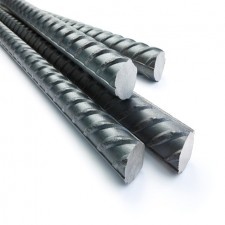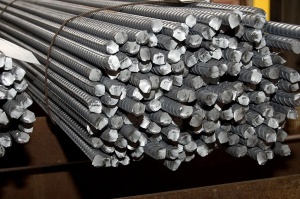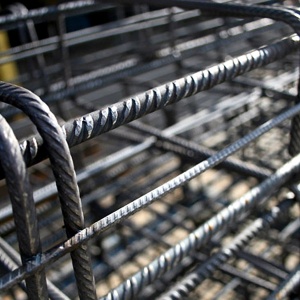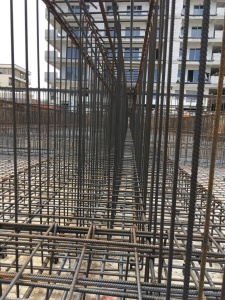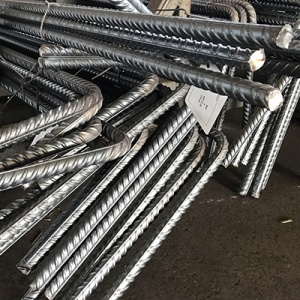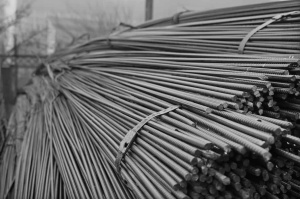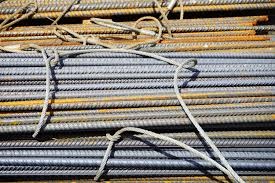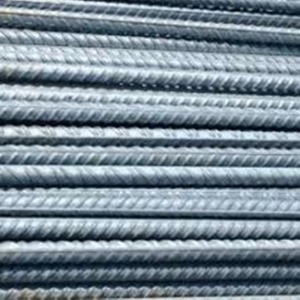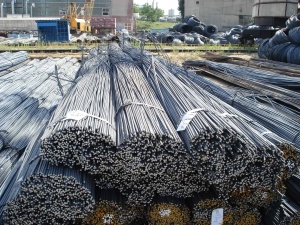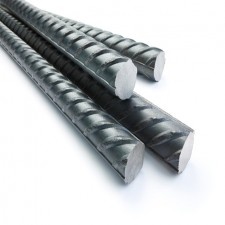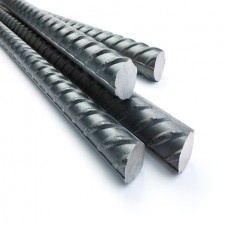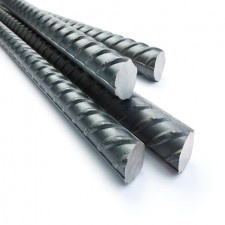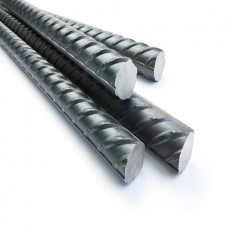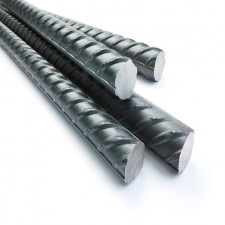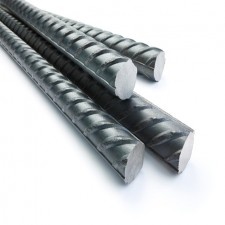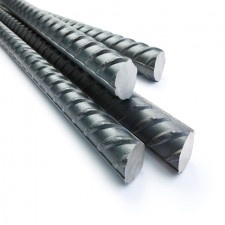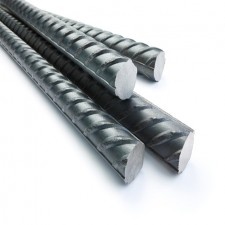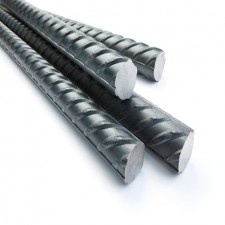Description
8 MM CONCRETE IRON BAR 12 M
1. Summary
Steel concrete is used to reinforce concrete structures, improving their resistance to mechanical stress. It is essential in civil and industrial construction, being used for foundations, walls, slabs, columns and other prefabricated structures.
It is categorised according to its application (main, spreader and erection bars), manufacturing technology (hot/cold rolled), shape (smooth or ribbed), operating characteristics (weldable/not recommended for welding) and dimensions.
Standards vary internationally:
-
Ukraine/CSI: DSTU 3760:2019, GOST 5781-82
-
EU: DIN 488, B500B, B500C
-
USA/Canada: ASTM A615, CSA G30.18-09
Production is by hot or cold rolling, resulting in rods or coils with diameters between 6 and 40 mm.
2. Applications of concrete steel in the construction industry
Steel concrete is an essential element in the construction of modern structures, providing concrete with the strength to withstand high loads and extreme conditions. It is widely used in:
-
Foundation, wall and floor construction
-
Making prefabricated elements (columns, slabs, panels, kerbs)
-
Bridge construction
-
Mining - anchoring and support systems
Classification and types of steel concrete
-
By application:
-
Main beams - support the load of the structure
-
Distribution bars - balance the forces between bars
-
Mounting bars - ensure correct positioning of reinforcement
-
-
After fabrication:
-
Hot / cold rolled
-
With smooth / ribbed surface
-
Pre-tensioned / untensioned
-
Weldable / non-weldable
-
International standardisation
Depending on the region of application, concrete steel is regulated by different standards. These determine strength classes, manufacturing methods, accepted dimensions and operating conditions.
3. Comparative table: International standards for steel concrete
| Parameter | Ukraine / CIS | Europe | USA / Canada |
|---|---|---|---|
| Standard | DSTU 3760, GOST 5781-82, GOST 10884-94 | DIN 488, BS 4449/97, SR 438/1, ELOT 1421-3:2005 | ASTM A615, ASTM A615M, CSA G30.18-09 |
| Resistance classes | A240C, A400, A500C | B500B, B500C, Gr 460B, PC 52 | Grade 40 (280), Grade 60 (420) |
| Diameter (mm) | 8 - 40 | 8 - 40 | 9,5 - 35,8 |
| Length (mm) | 6.000 - 18.000 | 6.000 - 18.000 | 6.000 - 18.000 |
| Delivery | Rods, coils | Rods, coils | Rods, coils |
4. Organisation by sections
1. Steel concrete applications
-
Reinforcement for foundations, walls, slabs
-
Precast: columns, kerbs, panels
-
Bridges and infrastructure
-
Mining anchoring systems
2. Classification of steel concrete reinforcement
By application:
-
Main bars
-
Distribution bars
-
Mounting bars
By characteristics:
-
Hot / cold rolled
-
Smooth / ribbed
-
Pretensioned / untensioned
-
Weldable / non-weldable
3. Quality standards
-
Ukraine / CIS: DSTU 3760, GOST 5781-82
-
Europe: DIN 488, BS 4449
-
North America: ASTM A615, CSA G30.18-09
4. Production of concrete reinforcement
-
Hot rolling (heated, rolled billets)
-
Cold rolling (additional mechanical processing)
-
Delivery as rods or coils
Steel Concrete BST500 - Overview
Origin and Definition
BST500 reinforcing steel, also known as B500S, is a high performance grooved iron originally sourced from Western European countries such as Germany, Austria and Spain. The abbreviation "BST" comes from the German Betonstahl (concrete steel), and the number "500" indicates its yield strength: 500 N/mm².
The reference standard for this type of steel in Germany is DIN 488.
Production in Eastern Europe
Today, BST500 is also produced in Eastern European countries such as:
-
Romania (Târgoviște, Buzău, Focșani)
-
Moldova
-
Ukraine
-
Bulgaria
-
Turkey
Ductility Classes
The BST500 is available in three ductility grades:
| Class | Specific deformation | Comment |
|---|---|---|
| B500A | 2,5% | Low ductility |
| B500B | 5% | Medium ductility |
| B500C | 7,5% | Highest ductility |
The B500C grade is particularly recommended for demanding structural elements due to its superior flexibility and strength.
Stria Structure
Bars of BST500 are characterised by:
-
Two opposite longitudinal ribs dividing the bar into two halves:
-
First half: alternating striations at 45° and 30°
-
Second half: successive stripes, all at 45°
-
This unique geometry facilitates superior adhesion to concrete.
Technical Features
-
Steel type: B500S
-
Nominal diameter: 6 - 28 mm
-
Yield strength: 500 N/mm²
-
Breaking strength: 550 N/mm²
-
Minimum elongation at break: 10%
Large projects can benefit from savings of between 7% and 12% on the amount of steel required due to the properties of this material.
Weights and Dimensions BST500
| Diameter (mm) | Section area (cm²) | Linear mass (kg/m) |
|---|---|---|
| 6 | 0.283 | 0.222 |
| 8 | 0.503 | 0.395 |
| 10 | 0.785 | 0.617 |
| 12 | 1.130 | 0.888 |
| 14 | 1.540 | 1.210 |
| 16 | 2.010 | 1.580 |
| 18 | 2.540 | 1.990 |
| 20 | 3.140 | 2.470 |
| 22 | 3.800 | 2.984 |
| 25 | 4.910 | 3.850 |
| 28 | 6.160 | 4.840 |
Use BST500 Concrete Iron
BST500 type concrete iron is used in:
-
Making of stirrups, reinforcement of columns, beams and diaphragms
-
Forming reinforcement meshes for floor slabs, floors and rafts
-
Reinforced and prestressed concrete structures in civil, industrial, road, hydro-technical and bridge construction
Technical Characteristics BST500
| Feature | Specification |
|---|---|
| Concrete steel type | BST 500 S (B500B or B500C) according to STAS DIN 488:2009 |
| Production method | Hot rolled, ribbed profile |
| Joining | Weldable (allows welded carcasses) |
| Moulding | Manual or mechanised (on moulding machine) |
| Nominal mass (kg/m) | According to STAS (7.85 kg/dm³) |
| Permissible deviations mass | ±4.5% (≥8 mm) / ±6.0% (≤8 mm) |
| Standard bar length | 12 m (±100 mm) |
| Flow limit | Min. 500 N/mm² min. |
| Breaking strength | Min. 550 N/mm² min. |
| Elongation A5 | Min. 10 per cent |
| Strength category | 5 |
| Ductility category | B (min. 5%) or C (min. 7.5%) |
Durability and Protection
-
The service life of ferro-concrete is equal to that of the reinforced concrete in which it is embedded.
-
The minimum concrete cover must be respected by the use of spacers and anti-corrosive protective measures, depending on the environmental aggressiveness class.
Commissioning
-
Cutting, moulding and assembly according to the structural design
-
Overlapping, wire bonding or welding of bars
-
Installation of spacers for concrete covering
-
The designer determines the type of reinforcement required, based on technical regulations
Quality control
Mandatory checks for steel concrete bars include:
-
Determination of mechanical strength (yield strength, rupture)
-
Determination of slip
-
Verification of bending behaviour
-
Adhesion (evaluation of striations for a secure hold in concrete)
Correct Storage
-
DO NOT store in direct contact with soil or materials that may cause corrosion
-
Covered spaces or temporary protection recommended
Declaration of Conformity
-
It is issued by the manufacturer and accompanies each batch of cast iron
This product is tested and certified to the strictest quality standards, guaranteeing a safe and effective user experience.
Details
Contact
Call now for any questions or to order:
+40769088858
+40769088860
+40769088861
+40769088862
Delivery
Offer
You want a lower price, you can't find what you are looking for, ask for an offer by email to: vanzari@pdet.ro







